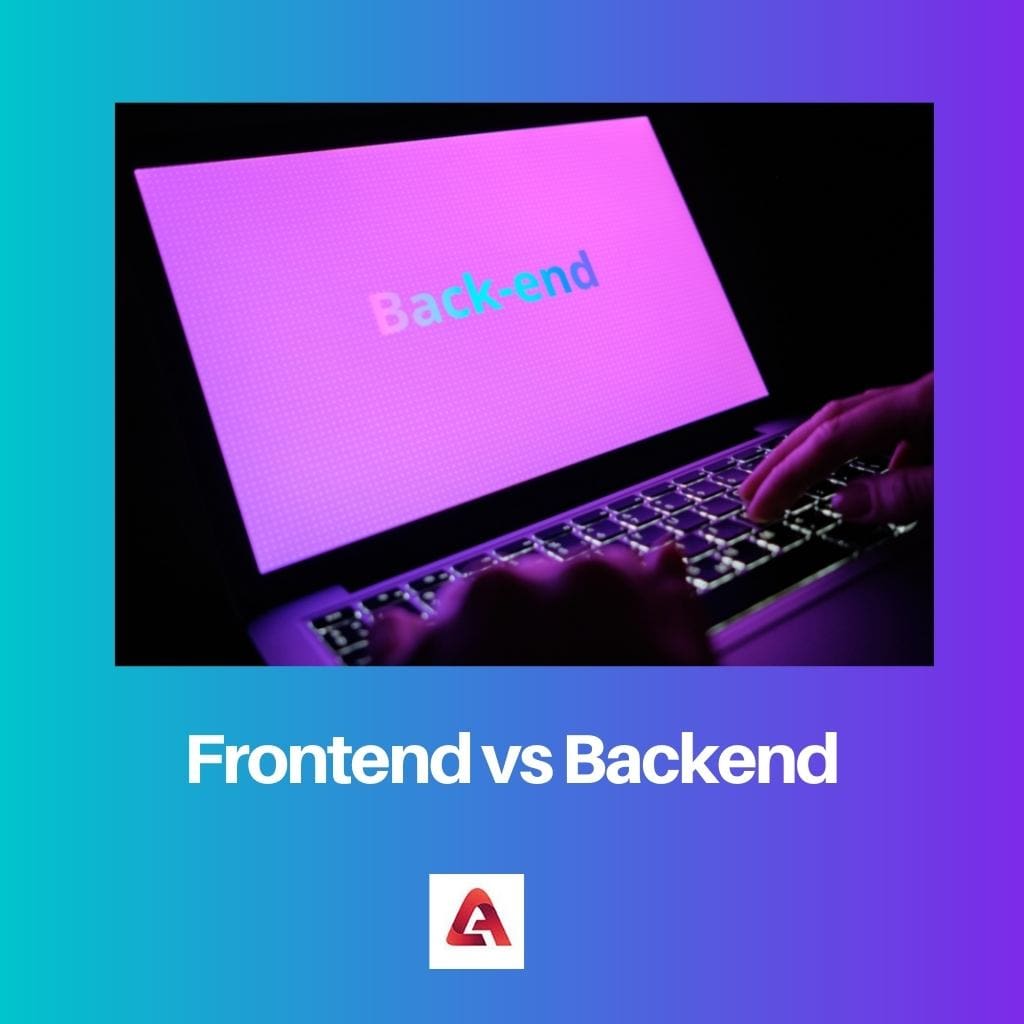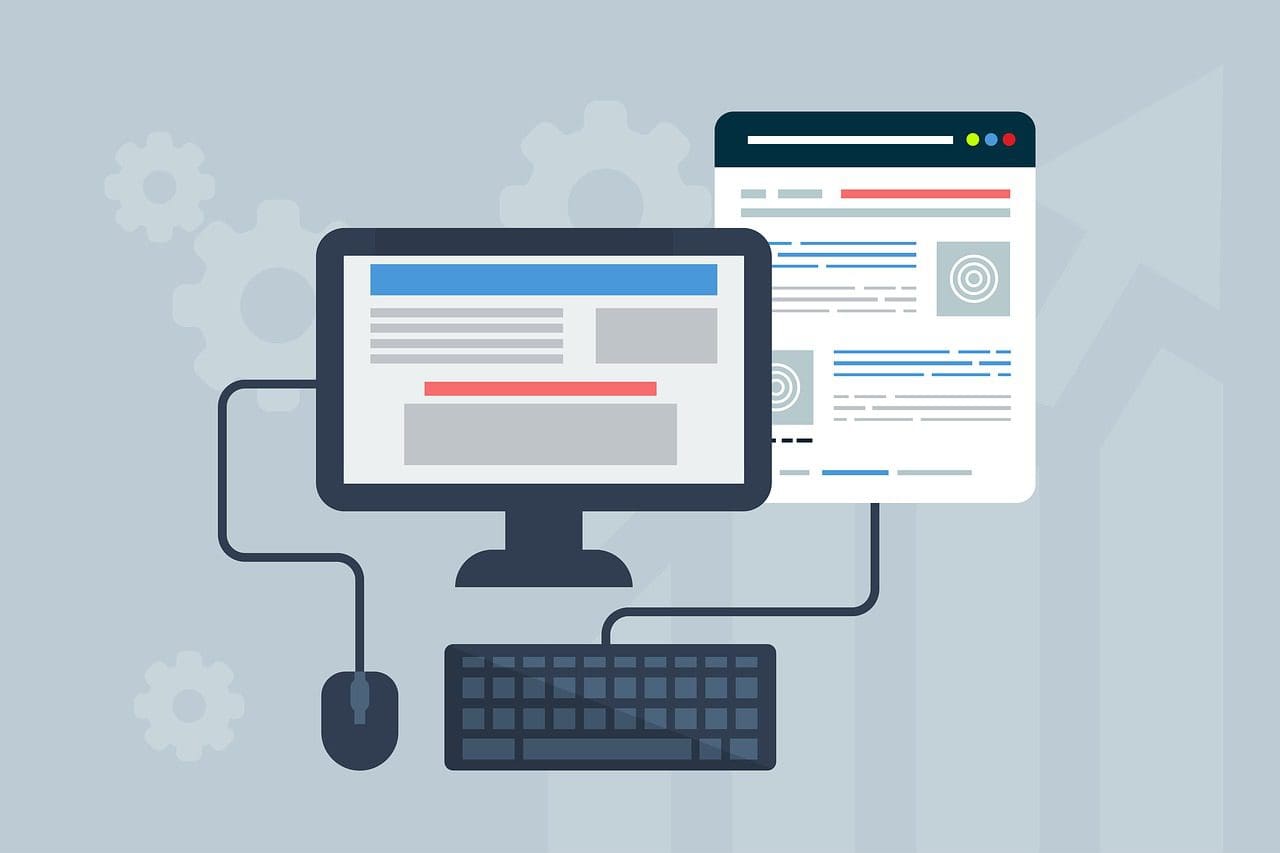Both frontend and backend are terms used in the web industry or, say, in the internet world.
If you know something about them, they are part of software engineering because the front and backend are fundamental parts that help develop the web.
So, people who are into web development will know the difference between frontend and backend.
Front-end can also be called front-end web development which is the practice of transforming or changing data to a particular graphical interface with the help of HTML, JavaScript, and many such kinds of stuff where the users can interact with the data.
Backend, on the other hand, means that part of the computer world that normal users cannot see with their eyes. The backend can be either software or a website opposite the front end.
In other words, the backend is where things happen before a particular page is displayed.
Key Takeaways
- Frontend refers to the part of a software application that the user interacts with directly, including the user interface, design, and user experience.
- Backend refers to the part of a software application that is responsible for processing data, managing databases, and ensuring that the application functions smoothly.
- The frontend and backend work together to provide a seamless user experience, powering the frontend and enabling it to display data and functionality.
Frontend vs Backend
Frontend refers to the part of a software application or website that users interact with directly. Backend refers to the server side of a software application or website and handles data storage, processing, retrieval, and the business logic that drives the application.

Comparison Table
| Parameters of Comparison | Frontend | Backend |
|---|---|---|
| Meaning | Frontend is part of a web page where the users can see the GUI. | The backend is part of a web page where the users cannot see this part. |
| Role | Frontend is where users can perform tasks like reading texts, designing, and other kinds of stuff. | On the other hand, the backend plays a crucial role in making the user interface possible on a particular webpage. |
| Client-side/Server-side | Frontend is the client-side application of a web page. | The backend is considered the server side of the application. |
| Essentials | In the case of the front end, the essentials include HTML, JavaScript, and CSS. | Backend, on the other hand, essentials like Ruby, Python, and many others. |
What is Frontend?
Front-end web development is a huge name in the world of the internet and computers. Most people will know what they are because those people could be working as web developers.
Now, it is their work to develop the web, and they may have come across the term ‘frontend’ many times.
What do you mean by the term frontend or front-end web development? Well, it is nothing but the part that can be seen by the users whenever they are using the internet.
Suppose you are on the internet looking for something like ‘Facebook’, and then you see search results coming after your search; that is what the front is basically.
The front end is the client-side application of a web page where the users can perform specific actions or carry out some activities like reading texts, designing videos, and many such kinds of stuff.
The front end is opposite to that of the backend, where the backend is those things that work behind the scenes so that you get what you have searched for.
Frontend is the things you see on the website, like GUI (graphical user interface) that includes flashy buttons, images, navigation menus, and many other such kinds of stuff.
As said earlier, the front end is mostly part of the web browser, which the users can see and interact with.

What is Backend?
On the other hand, the backend is just the opposite of the frontend, but they have a certain role to perform in the computer world or the world of the internet. However, it is not that they are not useful because they contribute to something.
The backend is referred to as the server side because servers help provide users with the desired information on the web page.
Everything behind the scenes is known as the backend, and the users or no one can see it.
The backend is that part of the computer world that does not come in contact with the users. The backend is the one that makes sure that everything is working fine in the front end.
So, one can say that both the front and back end go together and cannot perform without the other.
The backend developers are into handling everything except those that include a user-interface activity such as writing APIs or creating libraries and other such kinds of stuff.
Backend and frontend are into coding and decoding systems to ensure everything works fine in the internet world or the computer world.

Main Differences Between Frontend and Backend
- Both front and backend are part of the computer world where the front means the part of a web page where the users can perform certain activities, whereas the backend means the part which the users cannot see.
- Both front and backend play crucial roles in web development. Frontend is where things can be seen, and users can have an experience by looking.
- Everything occurs behind the scenes in the backend and is considered an enabler for the front-end web experience.
- Frontend is also known as the client side, whereas the back end is known as the server side.
- The essentials of the front end are HTML, CSS, and JavaScript, whereas the essentials for the back end are Ruby, Python, and many others.


A very informative article that provides a solid understanding of frontend and backend concepts. Great read!
This is what every aspiring software developer should know! The comparison table is particularly useful.
Completely agree. The comparison table sums up the main differences between frontend and backend very effectively.
I’m not sure if this article provides new insights for experienced developers, but it’s a nice refresher for sure.
Exactly, Faye. We can never underestimate the importance of understanding the basics.
That’s true, but it’s always good to go back to the basics and remind ourselves of fundamental concepts.
I really appreciate the detailed breakdown of frontend and backend. It’s a very well-organized article.
Absolutely. It’s evident that the author put a lot of effort into making this understandable and comprehensive.
Definitely. The article’s structure and content make it easy for anyone to grasp the concepts.
This is an excellent article. It does a great job of explaining both frontend and backend in a way that is simple and easy to understand.
Agreed. It’s always beneficial to have clear, straightforward explanations for these concepts.
Yes, I like how it avoids getting too technical and sticks to the essential information.
This article makes a very clear distinction between frontend and backend development. It is helpful to clarify many doubts for those who are not familiar with the terms.
Yes, the article is very informative and helpful, especially for those who are new to web development.
I can see how this article would be incredibly beneficial for anyone new to web development. It explains the concepts very clearly.
Yes, and it doesn’t assume prior knowledge in the field, which is great for beginners.
I found this article to be quite illuminating, particularly in its focus on providing a beginner-friendly explanation of these concepts.
Absolutely. It’s important for resources to be accessible to those who are new to the field.
This article provides an excellent foundation for understanding frontend and backend concepts. Kudos to the author.
Definitely. Articles like this are valuable for anyone navigating the world of web development.
Absolutely. It’s a comprehensive and accessible resource for anyone interested in web development.
This is precisely the kind of resource that can demystify the jargon and technicalities of web development. Bravo!
Absolutely. It’s insightful and accessibility is crucial when teaching complex technical concepts.
Indeed, it’s very beneficial to have articles like this to help bridge the knowledge gap for beginners.